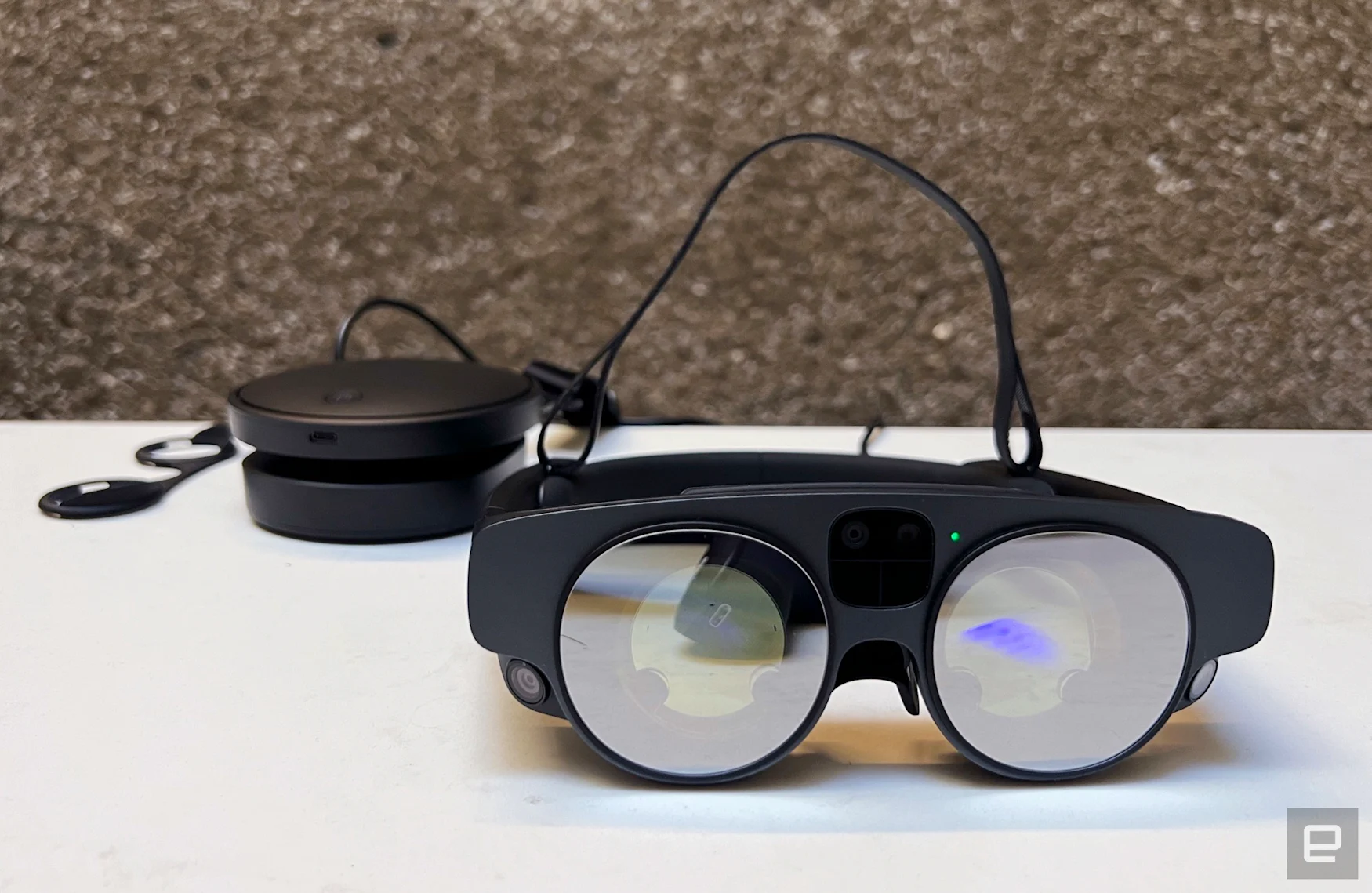Will Apple’s rumored blended actuality headset set the corporate up for failure, or for a future the place good glasses are in every single place? That is the large query operating by means of my thoughts as we put together for its annual Worldwide Developers Conference subsequent week. Regardless of Apple’s observe report with disrupting nascent expertise — most notably, with the iPod and iPhone — there’s loads of motive for skepticism with regards to blended actuality. Current blended actuality headsets just like the HoloLens 2 and Magic Leap 2 are focused primarily at company prospects that may extra simply abdomen the excessive costs. VR headsets have arguably plateaued with regards to the depth of their experiences and their potential market. Simply have a look at the , which largely recycles current VR video games.
After which there’s the foremost drawback, the one Apple wants to unravel greater than the rest: Why would mainstream shoppers — not the geeky early adopters or impassioned avid gamers — wish to put on one thing on their head for prolonged durations? A blended actuality headset would not be just like the iPod or iPhone, which expanded the chances of current merchandise however might simply slip into your pocket. It isn’t similar to the AirPods or the Apple Watch, equipment meant to go with Apple’s current {hardware}. A headset, by its very definition, must be an all-consuming product, a persistent reminder that you just’re seeing the world by means of Apple’s eyes.
At its WWDC keynote on Monday, Apple might want to make the case for its blended actuality headset as deftly as Steve Jobs unveiled the iPhone and iPod. However this time, it seemingly will not have a accomplished product meant for mainstream customers. (Admittedly, the iPhone took a number of years to remodel into one thing extra compelling with the addition of 3G and the App Retailer.) As an alternative, we’ll in all probability see an enchantment to builders to assist construct its blended actuality ecosystem, and for shoppers to have religion that it will finally be extra inexpensive and really helpful.
Reporting from factors to Apple’s blended actuality headset — probably — being a $3,000 machine with a concentrate on gaming, train and productiveness. It’s stated to depend on finger gestures to navigate a floating interface, and there can be a digital keyboard together with help for bodily keyboards. Moreover, Gurman notes that there can be a Digital Crown, just like the Apple Watch, that may transition the headset from absolutely immersive VR into blended actuality, which is able to mix the digital interface with the true world utilizing onboard cameras.
Magic Leap founder (and podcast co-host) Rony Abovitz sees Apple’s potential headset as a significant enhance for the blended actuality trade. “If Apple truly reveals an XR system subsequent week, that act alone will assist to validate the idea shared by many XR pioneers that XR is the subsequent necessary computing platform,” he informed Engadget over electronic mail. “It would take time and quite a few generations to excellent, however we should always see the market transfer extra shortly after this milestone.”

Devindra Hardawar/Engadget
However not everyone seems to be satisfied that “blended actuality” (MR) is the way in which ahead. Edward Saatchi, the founding father of the VR studio Fable and the unique founding father of Oculus’s Story Studio, tells me he nonetheless he is “unconvinced” concerning the idea of MR: “As a VR and AR creator, there are vital variations between making AR content material and making VR content material and it’s onerous to see how an MR headset which might’t resolve between AR and VR can be vastly profitable.”
“AR and VR current considerably completely different design challenges and you may’t port an AR app over to a VR app,” Saatchi added. He likens it to smartphone gamepad equipment, just like the Spine and Razer Kiyo, that purpose to allow you to play both complicated console video games or informal cellphone video games. Placing these collectively simply “would not fairly really feel proper” to him.
As cloudy as Apple’s intentions could seem proper now, the blended actuality trade is primed for the kind of disruption the corporate is thought for. In any case, Apple did not make the primary MP3 machine, or the primary smartphone. Nevertheless it was the primary firm to create a easy music retailer supported by the music trade, and the iPhone represented a dramatic leap ahead over what the BlackBerry and different smartphone platforms supplied in 2007.
“The most important piece that Apple brings to the desk with this [headset] is the Apple put in base, and the power to leverage the entire different Apple tech with a wealth of already put in {hardware},” Jack Gold, President and Principal Analyst at J. Gold Associates informed Engadget. “Meta doesn’t have that very same capability because it’s actually solely a browser/software program play. Apple might simply couple any headset with hyperlinks (and OS updates) to iPhones and Macs and have a built-in market of thousands and thousands. So Apple has a head begin towards anybody available in the market with an put in base of customers that may very well be simply upgraded.”
Gold notes it additionally is sensible that Apple is specializing in builders first: “Given the worth and the comparatively low volumes anticipated, it’s significantly better to get [headsets] to creators than shoppers, and save the shoppers for observe on merchandise with higher options (that are additionally being debugged by the builders), and a cheaper price.”
Even when Apple manages to construct one of the crucial refined blended actuality headsets available on the market, it is nonetheless unclear what the mainstream pitch for such a tool can be. For it to be really compelling, I would think about the corporate has to go a step farther from what we have seen with the Meta Quest (and the ). It’s going to have to transcend video games to ship experiences you’ll be able to’t get anyplace else.
One risk got here to thoughts a number of weeks in the past when Sightful . It is mainly a small computing field which, along with personalized Nreal good glasses, permits you to see a 100″ AR show. Whereas I did not get to check it in individual, it is easy to think about one thing from Apple providing related performance when related to a Mac, iPhone or iPad.
Simply think about toting a MacBook Air to a espresso store, slipping on a pair of blended actuality glasses, and having a 100-inch digital window increasing out of the laptop computer’s display. It might be a boon for multitaskers, in addition to individuals who have to work on confidential materials in public. (No extra individuals peeking over your shoulder on planes!) It’ll seemingly be years earlier than that is technically possible, however which will additionally align with when Apple could make a extra inexpensive headset.
Apple’s imaginative and prescient reportedly extends past blended actuality to light-weight AR glasses, but it surely’s nonetheless unclear how possible these can be sooner or later. “Pure AR glasses appear to be a completely logical subsequent step, but it surely was 10 years in the past that all of us stated it could take 10 years to get there, they usually nonetheless don’t appear 10 years away to me,” Saatchi stated.
However why cease at glasses? Apple’s blended actuality ecosystem might simply translate to extra superior expertise that doesn’ require you to put on something. “I feel the largest difficulty remains to be having to put on this ‘factor’ over your head that takes up house and makes it so I can’t actually see that nicely (think about making an attempt to stroll down the road with one among these items on),” Gold stated. “I feel in 5 to 10 years, what we’ll see is XR that doesn’t require this huge factor on my head to work. That’s when it will get extra significant, utilizing heads up shows, even 3D shows on telephones, and so forth.”
To paraphrase Dr. Emmet Brown in Again to the Future, the place we’re going, we can’t want screens.
Trending Merchandise

Cooler Master MasterBox Q300L Micro-ATX Tower with Magnetic Design Dust Filter, Transparent Acrylic Side Panel…

ASUS TUF Gaming GT301 ZAKU II Edition ATX mid-Tower Compact case with Tempered Glass Side Panel, Honeycomb Front Panel…

ASUS TUF Gaming GT501 Mid-Tower Computer Case for up to EATX Motherboards with USB 3.0 Front Panel Cases GT501/GRY/WITH…

be quiet! Pure Base 500DX Black, Mid Tower ATX case, ARGB, 3 pre-installed Pure Wings 2, BGW37, tempered glass window

ASUS ROG Strix Helios GX601 White Edition RGB Mid-Tower Computer Case for ATX/EATX Motherboards with tempered glass…










